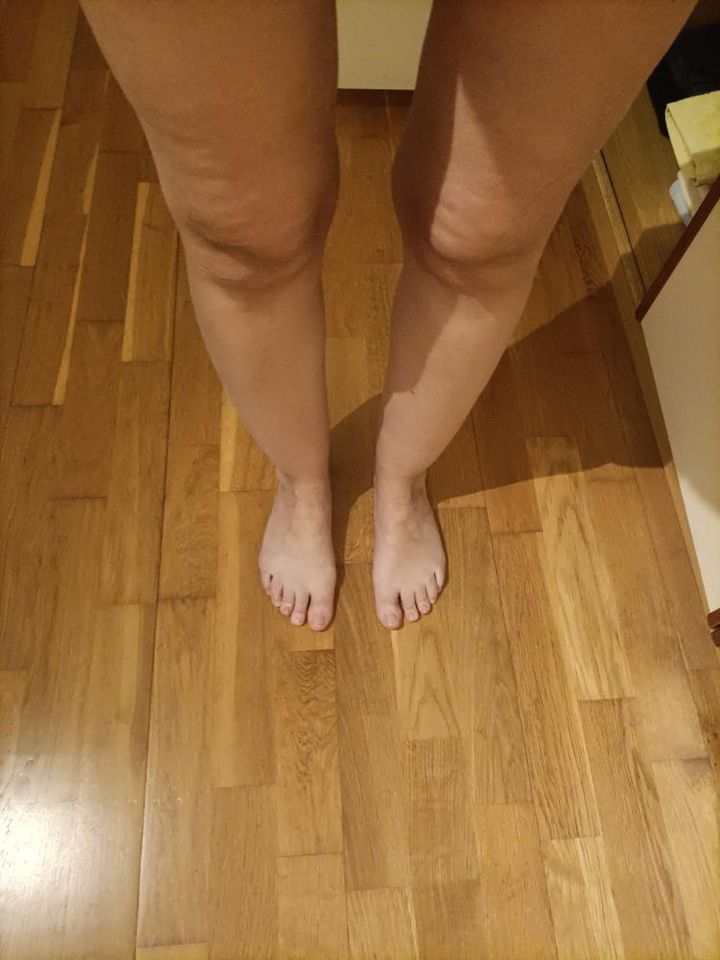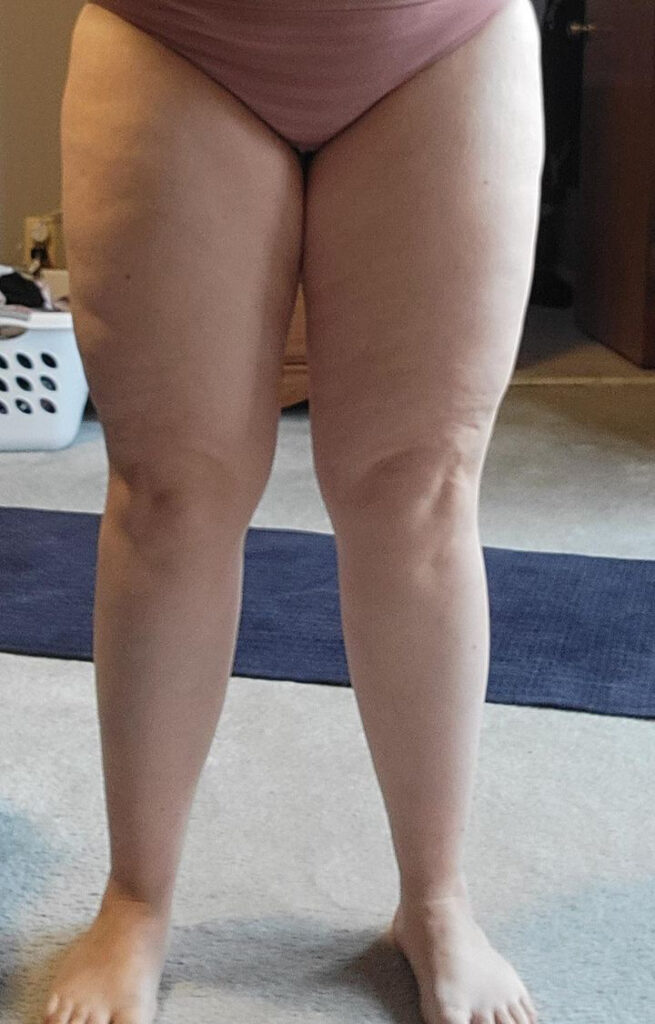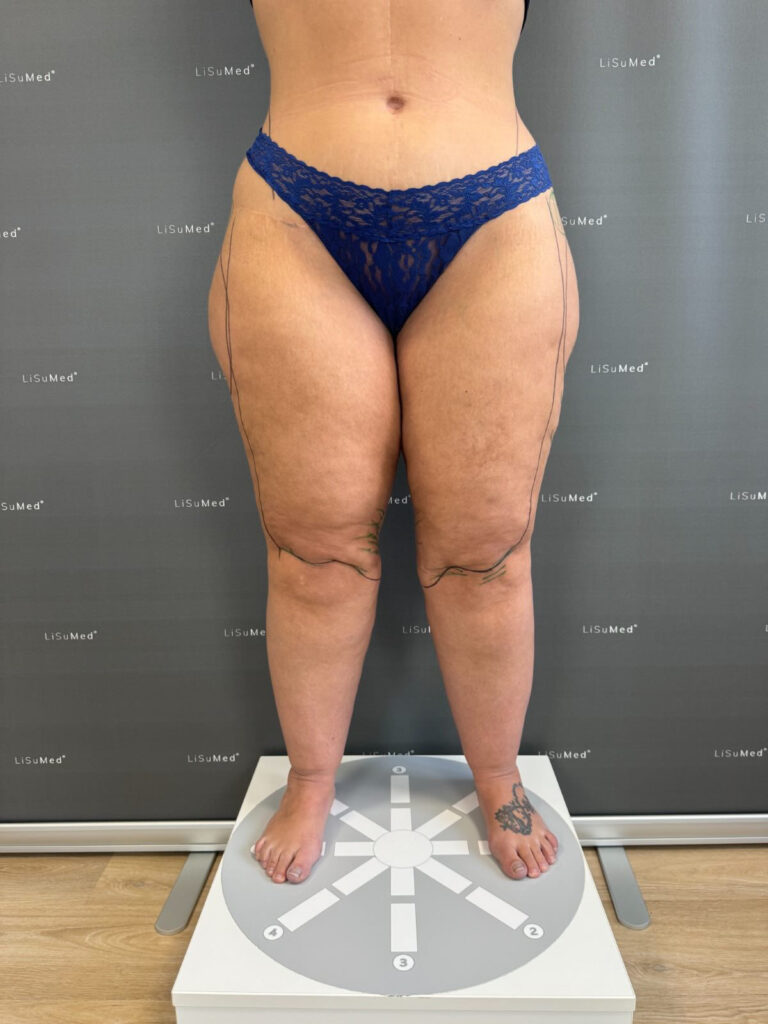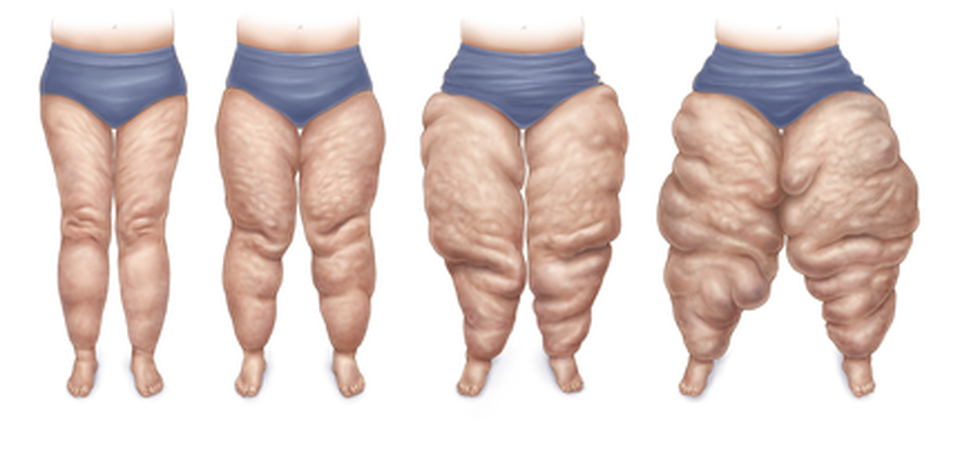If you suffer from Lipedema, like me, one of our biggest worries is how quickly it will progress and the different Lipedema stages we’ll go through. It’s no surprise that most women aren’t diagnosed until they reach the latter stages. This is due to it being such a difficult diagnosis to receive. Many women are sent away by doctors claiming they are obese and need to lose weight, when it simply isn’t the case.
My BMI has always been healthy so that wasn’t the case for me. But even so, my Lipedema diagnosis was increasingly difficult to come by. You have to be resilient and insist on being seen by a Lipedema specialist. See my blog ‘How to get a Lipedema diagnosis’ for more details on getting my diagnosis in the UK.
Lipedema progression is an extensive topic, and there are so many factors that can affect how quickly Lipedema progresses. Every woman’s case is different and some factors are completely out of our control, for example hormonal changes that take place during puberty, pregnancy and menopause can cause a rapid speed up of the progression.
The Different Stages of Lipedema
There are four stages of Lipedema, if left untreated with no conservative measures your Lipedema will progress over time. Unfortunately, each Lipedema stage is more severe than the last. Surgical treatments such as WAL liposuction are more successful in the earlier stages, so if this is the path you plan to go down, it is advised to seek treatment sooner rather than later. See my blog ‘Why I opted for Lipedema liposuction’ for a breakdown of the reasons why I chose surgical intervention to treat my stage 2 Lipedema in 2023.
Stage 1 Lipedema
In stage 1, the skin generally remains smooth to the touch, but there is a noticeable increase in fat deposits, typically in the hips, bum, thighs, and sometimes there’s Lipedema in the upper arms. The fat is symmetrical – meaning both sides of the body are affected equally – but it creates a clear and visible disproportion between the upper and lower body. At this stage, the fat feels soft, and Lipedema bruising may occur easily, even without injury. While there may be mild discomfort or heaviness, swelling is usually minimal and tends to improve with rest.
Stage 2 Lipedema
Stage 2 Lipedema is characterised by visible changes in the skin’s surface, which may appear dimpled or uneven. Underneath the skin, fat nodules or lipomas can be both seen and felt, giving the tissue a lumpier, firmer texture. The fatty tissue becomes more fibrous, and swelling may persist throughout the day, unlike in stage 1. Bruising remains common, and the affected areas can feel tender with Lipedema pain, especially when touched or after prolonged standing.
Stage 3 Lipedema
In stage 3 Lipedema, the accumulation of fatty tissue becomes more extreme and pronounced, often causing ‘deformities’ in the shape of the body. This is particularly noticeable around the thighs, often with column-like Lipedema knees, and in the lower legs, where large folds, lobes, or extrusions of fat may develop. This may start to interfere with day-to-day movement, making walking, sitting, or standing for long periods uncomfortable or difficult. The fat at this stage is typically harder and more fibrotic, and pain or sensitivity may be constant. Skin irritation or infections in the folds can also become more frequent due to friction and moisture build-up.
Stage 4 Lipedema
Stage 4 Lipedema is considered the most advanced stage and involves the development of Lipo-lymphedema – a condition where Lipedema and secondary Lymphedema occur together. In this stage, the lymphatic system is impaired, leading to fluid retention, swelling, and the feeling of heaviness in the affected limbs. This results in large overhangs or lobes of tissue, especially on the legs and sometimes in the arms – the fat may hang over the knees, ankles, or elbows. The skin may become thickened or hardened, and infections such as cellulitis become more common. Mobility is often severely limited, and day-to-day activities can be significantly impaired.
 Treatments that have Helped my Lipedema
Treatments that have Helped my Lipedema
There is no concrete answer to the question: How quickly does Lipedema progress? Every woman’s case is unique with varying Lipedema symptoms and aesthetic appearance. Since joining this community, I’ve never seen two identical cases. My Lipedema has progressed from stage 1 as a teenager going on the pill at 15, to stage 2 as a 31 year old. The transformation has been slow, however I have always followed a balanced diet and maintained a healthy weight in an attempt to slow down the spread of the condition.
The best advice I can give to those worrying about their Lipedema and how quickly it will progress is to try various conservative treatments. Personally, I follow an anti-inflammatory diet for Lipedema and carry out other measures as part of my Lipedema management routine. This includes: wearing compression for Lipedema, using a vibration plate, rebounding, dry brushing for Lipedema and regular gentle exercise. And if you’d like to remove the Lipedema completely, do some research on surgical interventions such as WAL liposuction.
So, How Quickly does Lipedema progress?
Based on medical research, it’s clear that hormonal changes in the body cause Lipedema to get worse. This is bad news for us lippy ladies, hormonal changes are inevitable – especially menopause.
However, to put things into perspective, researchers have estimated that on average, it could take around 17 years to reach the Lipo-lymphedema phase. 17 years is a long time. And I don’t believe that to be entirely accurate, if sufferers follow conservative measures for Lipedema and maintain a healthy lifestyle, I believe the progression can be slowed down significantly and some women would never reach stage 3 or 4 in their lifetime.
Disclaimer: My blogs talk about Lipedema, diet, surgery and much more. I’m talking from my point of view to help women, and remind them they are not alone. I am not a medical professional, so the content above is from my own perspective with research I have done into the topic. It’s not meant as medical advice, you should always consult your doctor or a specialist for both your diagnosis, and a treatment plan.




 Treatments that have Helped my Lipedema
Treatments that have Helped my Lipedema